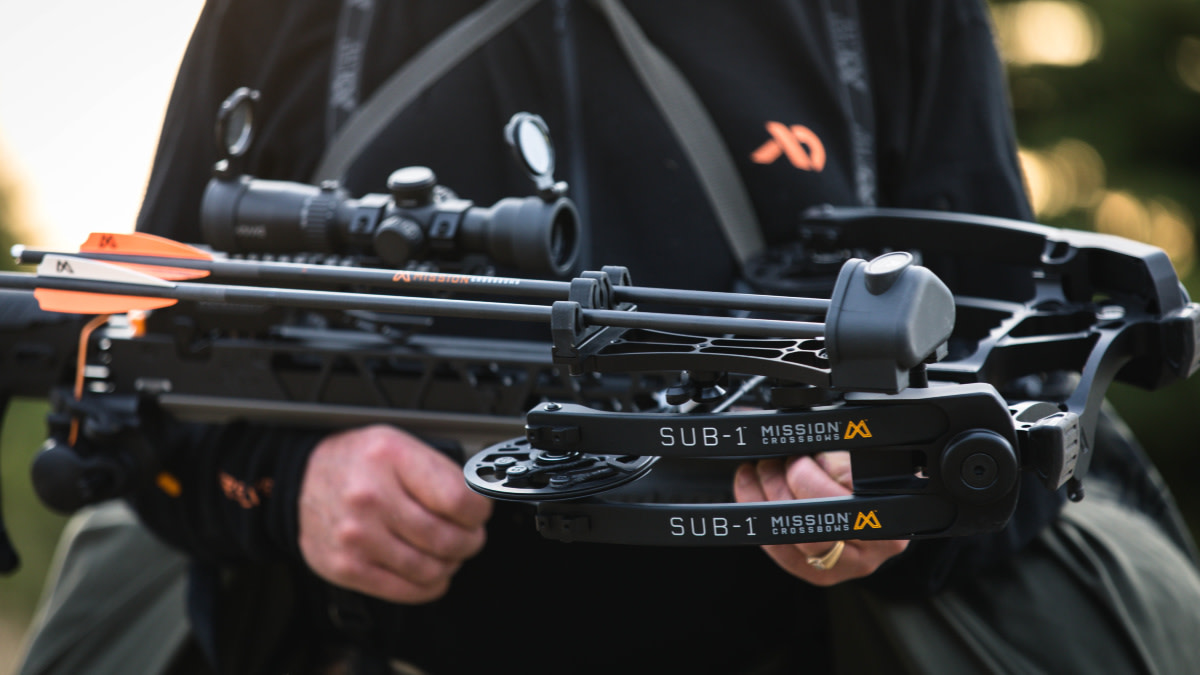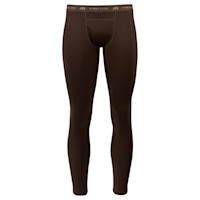
The Internal Revenue Service has never wavered in defining crossbows: They’re archery gear, even though the bow sits upon a gunstock and releases each shot with a safety-equipped trigger.
Bowhunters and other archers, however, will likely never achieve unanimity on crossbows, in use or by definition, even though 27 states currently allow them without caveats during deer and elk archery seasons. At the turn of this century, only three states—Ohio, Arkansas and Wyoming—allowed their use.
Why would the IRS care either way? Because it collects federal excise taxes from manufacturers each time they sell a gun or bow. The IRS then channels those revenues to the U.S. Fish and Wildlife Service for conservation efforts nationwide, as required under the Pittman-Robertson Federal Aid in Wildlife Restoration Act. Congress made most archery gear subject to the P-R Act in 1972, and the IRS has since ruled that crossbow manufacturers must pay that 11 percent excise tax on their products.
That doesn’t mean the bowhunting community accepts such definitions. Many bowhunters who prefer compounds, recurves or longbows mutter “cross-gun” when watching YouTube videos of shooters drilling 100-yard bullseyes with a bipod-mounted crossbow off a bench. Others, of course, see a controlled setup that’s seldom duplicated in the mountains or deer woods. Besides, even if clinical, unhurried shots were common in bowhunting, compound bows and crossbows are long-distance duds compared to bench-fired rifles using computer-generated trajectories and bullet-drop compensating optics that shoot 10 times farther.
Available Evidence
Either way, most states that recently loosened crossbow regulations lie in “whitetail country,” a region the Quality Deer Management Association defines this way: states east of a line from Montana’s eastern border to Texas’ western border. Most whitetail states face declining hunter numbers, and increasing or stabilizing deer herds. Western states, meanwhile, aren’t losing hunters. Demand generally exceeds supply for the West’s many big-game hunting opportunities.
As whitetail states expanded crossbow-hunting the past 15 years, their wildlife agencies conducted studies and reviewed license sales to assess the crossbow’s impacts. Those analyses have thus far found no harmful impacts on deer herds, and most find the crossbow’s effectiveness differs little from compounds when used for hunting.
Those analyses and reviews came from the 27 states with no crossbow restrictions, as well as five states that allow crossbows for people starting at age 50 (Vermont), 60 (Minnesota), 65 (Maine), 68 (New Hampshire) and 70 (Iowa). Florida also allows crossbows on private property, while Kentucky and New York allow crossbows during part of their archery seasons.
With crossbows part of archery season in 35 states, wildlife agencies regularly gather data on harvest rates, bowhunter behaviors and wounding rates. Among their biggest takeaway is that bowhunters are bowhunters, no matter their choice in bows. Some even shoot both weapons.
C.J. Winand, a veteran biologist and longtime contributor to Bowhunter Magazine, has studied crossbow trends the past decade. He notes two standard changes when states legalize crossbows, with both occurring roughly within five years: crossbow harvests match or exceed vertical-bow kills, and crossbow hunters make up about 50 to 60 percent of all bowhunters.
With such an even split, most states don’t differentiate bow kills by weapon choice and simply combine them.
And when analyzing archery’s overall impact on deer harvests (or elk, in Wyoming’s case), the results show little change overall, and no biological reason to separate archery harvests by weapon. In Wyoming, archery contributed a record-high 11 percent of the elk kill in 2017, but hovered from 6.9 to 9.6 percent of the harvest from 2008 to 2016. Firearms hunters took the other 89-plus percent. In other 2017 Wyoming hunts, archers took 4.7 percent of the pronghorns, 4.7 percent of the muleys and 7.4 percent of the whitetails.
Matt Knox, deer project coordinator for the Virginia Department of Game and Inland Fisheries, said archers are shooting more deer since crossbows were legalized in 2002, and expects the crossbow harvest to soon pass the “vertical bow” kill. Even so, the combined archery kill accounts for only 15 percent of Virginia’s entire harvest.
In contrast, 2015 data compiled by the QDMA showed New Jersey bowhunters took 58 percent of the state’s total deer kill; Connecticut bowhunters took 50 percent; Massachusetts, 45 percent; Ohio, 44 percent; and Illinois 37 percent. Comparisons between crossbow and compound use weren’t available.
More recently, in 2017, bowhunters accounted for roughly 37 percent (142,775) of Michigan’s 390,100 deer kill; and 29 percent (92,394) of Wisconsin’s 319,441 deer kill. Wisconsin tracks its crossbow and regular-archery kills, and last year crossbow archers shot more deer and more bucks than did regular archers for the first time (45,166 vertical bow kills, and 47,228 crossbow kills). That trend increased further in Wisconsin in 2018, with 40,244 vertical bow kills, and 46,976 crossbow kills.
Crossbow participation increased steadily after both states opened their bow season to crossbows, Michigan in 2009, and Wisconsin in 2014.
Key Research
Ohio hasn’t surveyed its bowhunters for weapon choice the past couple of years, but when last it checked in 2012 through 2014, the rates varied from about 50-50 crossbow/vertical bow to 60-40 crossbow/vertical.
Ohio also recently conducted a survey to study bowhunters’ shooting and wounding rates in 2014-2015, and found few differences between crossbows and vertical bows. Here are some of those findings:
- The average shooting distance for all bowhunters was 25 yards, but shots that hit the deer averaged 22.4 yards, almost 30 percent closer than shots that missed, 31.1 yards. Accuracy decreased with distance for all bow types.
- Most shots taken with compounds and crossbows were 20 to 24 yards, and most shots taken with traditional gear (recurves and longbows) were 15 to 19 yards.
- The average shooting distance for compound hits was 22.6 yards, and the average miss was 31.6 yards.
- The average shooting distance for crossbow hits was 22.4 yards, and the average miss was 31.1 yards.
- Compound bow archers released 1,015 shots and connected on 686, for 67.6 percent accuracy.
- Crossbow archers released 719 shots and connected on 529, for 73.6 percent accuracy.
- Traditional archers released 38 shots and connected on 22, for 57.9 percent accuracy.
- Crossbow archers recovered 60 percent of deer they shot at, and didn’t recover 19 percent of deer they hit.
- Compound archers recovered 56 percent of deer they shot at, and didn’t recover 17.7 percent of deer they hit.
- Traditional archers recovered 40 percent of the deer they shot at, and didn’t recover 30 percent of deer they hit.
- Overall, bowhunters didn’t recover 18.5 percent of deer they hit.
Some critics might suggest surveys aren’t as accurate as hands-on scientific research, but a 2008 study of bowhunters at the Naval Support Facility in Indian Head, Maryland, also reported little difference in wounding rates between compound and crossbow shooters.
Crossbows Increase Opportunity
Most wildlife agency officials consider the crossbow debate over, but Wyoming plans to include crossbows in a public opinion study it is conducting on technology and fair chase. Elsewhere, agency personnel believe crossbows are finding their place in bowhunting.
“My only comment is this: If a state has a short firearms deer season, crossbows and other archery gear will be very popular,” Knox said. “Short gun seasons ‘drive’ deer hunters to archery seasons. And if an archery/crossbow license gets the deer hunter an additional deer tag—especially a buck tag—then the push to archery and crossbows further increases.”
States generally find that crossbows help retain bowhunters, especially those who would otherwise drop out as they grow older. When Wisconsin opened to crossbows in 2014 it immediately saw a surge in older bowhunters.
“Our first year of license data suggested crossbows might add 10 to 12 years onto the average bowhunter’s career,” said Brian Dhuey, a longtime researcher with the Wisconsin Department of Natural Resources.
Dhuey said the mean age for crossbow hunters was 52, while the mean age for regular bowhunters was 38. However, 71 percent of first-time hunters buying a crossbow license were not yet 18, indicating crossbows might also become a bridge to archery for youngsters.
Do all these factors mean more Western states will join the rest of the nation and open their archery seasons to crossbows? Currently, Oregon is the only state with an outright hunting ban on crossbows. Most Western states, and Alaska, restrict crossbow use to firearms seasons and people with certified physical impairments.
Winand, for one, doesn’t foresee many converts among Western states, given widespread tag quotas, stable resident hunter numbers, and growing demand for those tags even as hunter numbers decline in Eastern states.
“It’s much easier to argue for crossbows when you have more deer than you can manage,” Winand said. “Most Western hunters would probably still carry a compound because it’s not as bulky, but crossbows just aren’t a discussion that interests most Western states.”
Feature image via Captured Creative.







